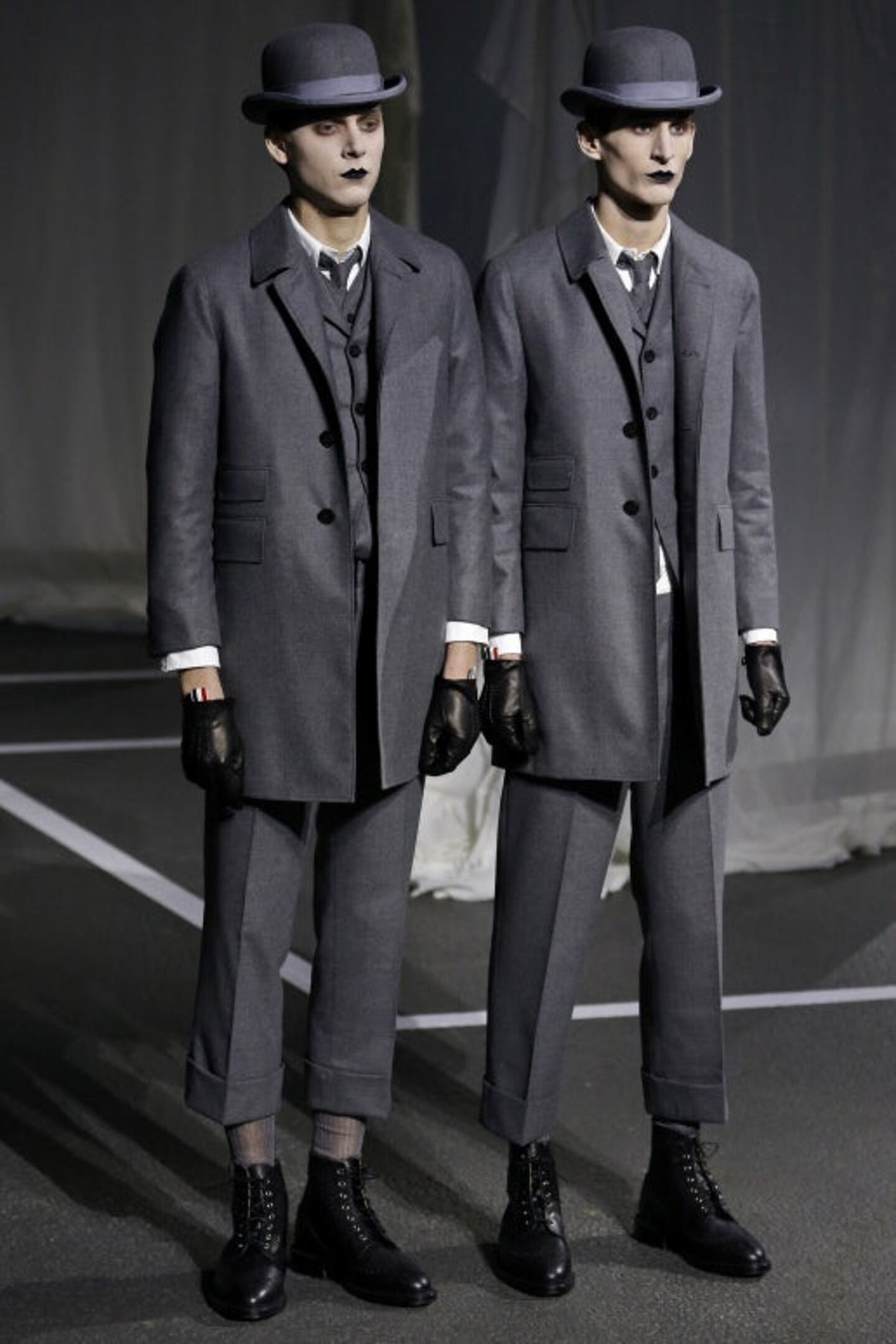
The Business of Fashion
Agenda-setting intelligence, analysis and advice for the global fashion community.

Agenda-setting intelligence, analysis and advice for the global fashion community.

PARIS, France — The vision was patrician: thirteen friends come back to their club after weathering the Depression. Times have been hard. The clothes they wore as children of privilege have had to sustain them through the downturn. They've cherished them, worn them into the ground till they were virtually threadbare.
Is this the inevitable fate of the One Percent? Would that it were so, but the primary point Thom Browne wanted to make — with a presentation that ended up being more poignant and personal than he perhaps intended — was about our relationship with the clothes we love. Every outfit was presented three ways: brand new, lightly worn, and worn out. The models posed in a mirror image, pristine past and crapped-out present confronting each other.
“I love seeing people invest in beautifully made clothes,” Browne said. “And then really wear them.” It was a statement about heirloom dressing — picture those toffs who pass their tailor made garments onto their sons, with patching where it’s needed — but with the added drama of a fashion show. And, in another sense, it was also a comment on what Browne does as a designer. Time is fashion’s enemy. He chose to make it a prime component of his collection by incorporating the wrack of time’s passage.
So a coat plushly patchworked from beaver fur, astrakhan and wool melton would confront its mirror image of plush gone wrong. Or a black wool cape with a check pattern extravagantly embroidered with pearls would… well, imagine what would happen to a cape studded with pearls if its wearer had to sleep under a bridge in Detroit for a few years. Perversely (or not — this was a Thom Browne collection after all) the most ruined pieces were the best. Chewed by moths, splattered with make-do patching, as frayed as dog toys, the coats, jackets and capes that represented the last gasp of a much-loved garment were actually technical feats as accomplished as anything Browne has managed in the past. “The ageing had to be designed into the clothes, and there was much more work in the aged version,” he said.
Browne’s timeframe — the Depression — meant there was a theatrical period flavour to the presentation. The slicked-back hair and the garters, for instance, and the style of coat that he called “university stadium.” (The Stutz Bearcat was parked outside.) But his vision of masculinity clinging to its codes, even as they become increasingly threadbare, was timeless. Political subtext? He’s always going to say no. But he’s always going to say no anyway.
From where aspirational customers are spending to Kering’s challenges and Richemont’s fashion revival, BoF’s editor-in-chief shares key takeaways from conversations with industry insiders in London, Milan and Paris.
BoF editor-at-large Tim Blanks and Imran Amed, BoF founder and editor-in-chief, look back at the key moments of fashion month, from Seán McGirr’s debut at Alexander McQueen to Chemena Kamali’s first collection for Chloé.
Anthony Vaccarello staged a surprise show to launch a collection of gorgeously languid men’s tailoring, writes Tim Blanks.
BoF’s editors pick the best shows of the Autumn/Winter 2024 season.